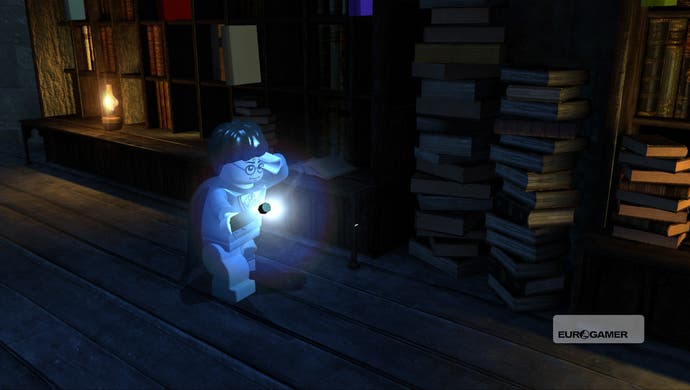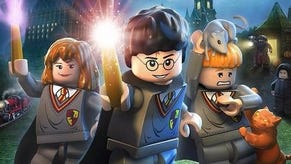LEGO Harry Potter: Years 1-4
A kind of magic.
This is also a much more tangible game world than previously seen in the series. There's physics here, and a persistent nature that means changes wrought in a room at one point will remain there when you return. Stacks of books can be knocked over, LEGO blocks shatter and scatter in realistic ways, and there is even a whole slew of new puzzle types where you can manipulate individual LEGO bricks and build your own towers and bridges to reach new areas. These grow in complexity as the stories progress, and while they'll never tax adult gamers, they'll certainly stretch youngsters and force them to think laterally about what their powers can actually do.
In fact, the game as a whole is more intricate and more cleverly layered than before. Potions can be mixed in cauldrons, but finding the three ingredients usually requires three smaller puzzles to be solved first. Time and again, working out how to get from A to B means taking a fun mental journey via X, Y and Z first, always adapting, always using new abilities to get past problems that were previously off limits. If there's one thing the LEGO games do well, it's their fantastic structure, gently coaxing kids to do better each time, to find something new they hadn't done before, and it's never been better than this deep, deep rabbit hole of clever interlocking gameplay challenges.
If LEGO Harry Potter has a weakness, it's that the stories themselves don't always lend themselves particularly well to the silent comedy that LEGO demands. As so much of J. K. Rowling's plotting is driven by dialogue - the one thing LEGO figures can't provide - unless you know your Potter lore inside out, some of the cut-scenes can be sparse of narrative and struggle to match the belly-laugh moments from previous titles.

This problem spills over into the collectables; while having over 160 characters makes for an impressive back-of-the-box bullet point, it doesn't really translate into compelling gameplay. The thrill of finding or earning a new character token deflates when you realise you have no idea who the person is and, since the majority of them are Hogwarts students, they don't offer much variety in appearance or abilities. Hardcore Potter-philes may care who Ernie Macmillan is, or be thrilled at the prospect of playing as Lee Jordan, but it adds little of value to the game beyond rather obsessive fan service. There's also some of the old screen tearing, a consistent problem with the series that hasn't been fixed yet.
It's doubtful that the target audience will notice or care about such adult quibbles. In the past, my son has absolutely loved all the LEGO games, and it's through him that I've been able to appreciate just how much craft and care goes into precisely balancing every tiny aspect of the design in these seemingly silly confections. Recently, however, he'd been lured away by Banjo Kazooie, and although he's read the Potter books and seen the films, he was never particularly infatuated by them. When I told him LEGO Harry Potter had arrived in the post, he only gave a non-committal shrug. I began to wonder if this would be the first LEGO game I'd have to review without his help.

But then he saw me playing it, and it was like a moth to a flame. He'd chuckle at the funny bits. Then he'd recognise something from the films. Then he spotted how familiar elements from the old LEGO games had been reworked to fit Harry Potter. Sure enough, about 10 minutes later, he wanted to know when I'd be giving him the disc.
And that's the genius of these games. In the past I've always been cautious with my praise for the LEGO titles, because as fun and as charming as they were, I always felt they could be something more: that there was some as-yet unreached plateau where the great ideas would coalesce into something truly special. With LEGO Harry Potter, they've reached that level. If there's a better kids' game this year, I'll eat my Sorting Hat.



